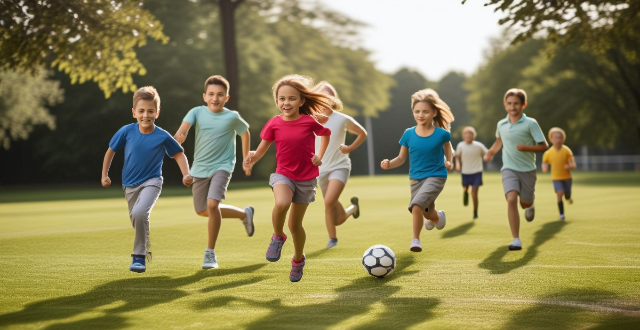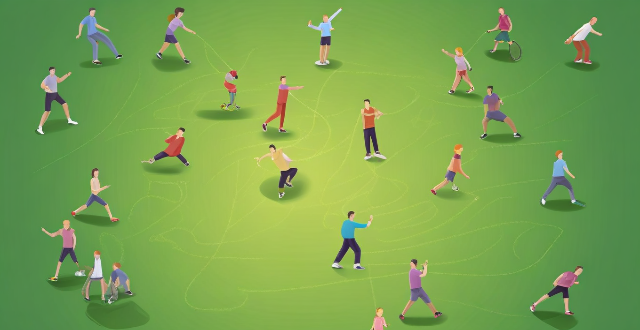Sports Biomechanics

Can studying sports biomechanics help prevent injuries in athletes ?
Sports biomechanics can help prevent injuries in athletes by identifying risk factors, optimizing movement patterns, and providing feedback and guidance. Examples include analyzing baseball pitchers' mechanics to reduce strain on their joints, gymnasts' movements to identify areas of stress, and runners' form to improve efficiency and reduce strain on their knees and ankles. By working with coaches and trainers who specialize in sports biomechanics, athletes can improve their technique and reduce their risk of injury over time.

What is the importance of biomechanics in sports research and development ?
Biomechanics is crucial in sports research and development. It involves the study of body movement and its interaction with external forces. By understanding biomechanics, athletes can improve performance, reduce injury risk, and enhance athletic ability. Biomechanics helps identify areas for improvement, prevent injuries, and develop better coordination and control. Overall, it's essential for athletes to reach their full potential.

What is sports biomechanics and how does it apply to athletic performance ?
Sports biomechanics is a subdiscipline that applies mechanics principles to study human movement in sports and exercise. It focuses on how forces and motion affect the body during physical activity, combining knowledge from physics, biology, engineering, and other areas for understanding and improving athletic performance. Key concepts include kinematics, kinetics, and dynamics. Applications of sports biomechanics include injury prevention through gait analysis and movement optimization; technique improvement via motion analysis and force plates; equipment design considering ergonomics and material science; training programs that incorporate resistance, flexibility, and stability training; performance analysis using data analysis and feedback systems; and recovery strategies like physical therapy and rest-activity balance.

In what ways can technology be utilized to enhance sports biomechanics analysis ?
Technology has revolutionized sports biomechanics analysis, providing new tools and methods for coaches, athletes, and researchers. Video analysis software allows frame-by-frame review of performances, wearable technology provides real-time data on an athlete's physiology, force plates measure ground reaction forces, motion capture systems track movements in three dimensions, and computer simulation modeling creates virtual models of an athlete's movements. These technologies have made it easier than ever before to collect and analyze data on an athlete's performance, leading to improved training programs, injury prevention, and overall performance optimization.

How do force vectors influence an athlete's movement in sports biomechanics ?
Force vectors play a crucial role in sports biomechanics. The magnitude and direction of force vectors determine an athlete's acceleration, deceleration, and direction of motion. There are several types of force vectors, including internal, external, contact, frictional, and elastic forces. Understanding how these force vectors influence an athlete's movement is essential for improving performance and preventing injuries in sports. Coaches and athletes can use this knowledge to optimize their training programs and techniques.

How does sports biomechanics address the unique challenges faced by athletes with disabilities ?
Sports biomechanics plays a crucial role in addressing the unique challenges faced by athletes with disabilities. It helps optimize their performance, enhance their training, and improve their overall well-being through customized equipment design, gait analysis and rehabilitation, sport-specific technique optimization, inclusive sports development, and education and advocacy efforts.

What role does kinetics play in the study of sports biomechanics ?
Kinetics is a key aspect of sports biomechanics, focusing on forces and motions in physical activity. It aids in understanding how athletes generate power, control movements, and enhance performance. Key points include force analysis (internal and external), energy considerations (potential, kinetic, work, and power), movement efficiency (mechanical advantage, joint reaction forces, ground reaction forces), injury prevention and rehabilitation (overuse and traumatic injuries, rehab programs), and performance optimization (technique analysis, equipment design, training methods). Overall, kinetics helps coaches, athletes, and researchers make informed decisions about training, equipment, and technique to achieve safe and effective goals.

How do the principles of sports biomechanics differ between individual and team sports ?
This text discusses the principles of sports biomechanics in individual and team sports. It highlights the differences in kinematics, kinetics, and coordination between the two types of sports. In individual sports, there is a focus on precision, technique optimization, and personal performance, while team sports emphasize strategic interactions, group coordination, and adaptability to complex game situations. The text concludes by emphasizing the importance of understanding these distinctions for coaches and athletes to tailor their training approaches to best suit the specific demands of their chosen sport.

How does understanding joint mechanics contribute to improving athletic performance through sports biomechanics ?
Understanding joint mechanics is crucial for improving athletic performance in sports biomechanics. By optimizing movement patterns, preventing injuries, enhancing force production, and improving stability, athletes can achieve greater success in their chosen sports. Sports biomechanists analyze an athlete's joint mechanics to develop targeted training programs that improve joint function and overall performance. Advances in sports technology provide real-time feedback on joint mechanics during training and competition, allowing athletes to fine-tune their technique and make adjustments to their training program as needed.

In what ways do factors like body composition and flexibility affect sports biomechanics ?
In sports biomechanics, body composition and flexibility are crucial factors affecting performance. Increased muscle mass and a high strength-to-weight ratio enhance power in weightlifting and sprinting. A lower fat percentage improves aerodynamics and reduces energy expenditure in endurance activities. Higher bone density offers better support in impact-heavy sports. Greater flexibility increases the range of motion, preventing injuries and improving efficiency in rapid movements. Optimal body composition and flexibility can significantly improve an athlete's performance and reduce injury risk.

How can coaches use sports biomechanics to optimize training programs for their athletes ?
How coaches can use sports biomechanics to optimize training programs for their athletes, including improved technique, injury prevention, and enhanced performance. Steps to integrate sports biomechanics into training programs include assessing the athlete's baseline performance, analyzing their technique, designing a customized training program, monitoring progress and making adjustments, and incorporating technology into training sessions. Examples of how sports biomechanics can optimize training programs include strength training, running mechanics, and swimming technique.

How has technology impacted sports research and development ?
Technology has significantly impacted sports research and development by introducing advanced tracking systems, virtual reality training, data analysis tools, biomechanics applications, and nutrition science advancements. These technological innovations enable athletes, coaches, and researchers to optimize performance, prevent injuries, and gain a deeper understanding of the science behind sports.

What are the latest advancements in sports science ?
The text discusses the latest advancements in sports science, including wearable technology, nutritional science, biomechanics, and mental training. Wearable technology provides real-time data on an athlete's performance, while nutritional science focuses on specialized diets and supplements. Biomechanics studies human movement to improve form and reduce injuries, while mental training techniques help build confidence and manage stress. These advancements have revolutionized athletic performance across all levels of competition.

What is sports technology analysis ?
Sports technology analysis is a process of using advanced technologies to collect, analyze, and interpret data related to sports performance. The goal of sports technology analysis is to improve athletic performance, enhance coaching effectiveness, and optimize team management. Key areas of sports technology analysis include biomechanics, physiology, video analysis, wearable technology, and data analytics. By utilizing these tools and techniques, coaches can gain valuable insights into athletes' physical abilities, training methods, equipment usage, and game strategies. This leads to better overall performance and increased success in competitions. Sports technology analysis also enhances coaching effectiveness by providing coaches with detailed information about athletes' strengths and weaknesses, allowing them to develop more effective training programs that target specific areas for improvement. Additionally, sports technology analysis helps optimize team management by monitoring players' workloads and fitness levels through wearable technology and other tracking systems. Overall, sports technology analysis is a powerful tool that allows coaches to make more informed decisions about player development, game strategies, and team management.

How can sports research and development help prevent injuries ?
Sports research and development can help prevent injuries by understanding injury mechanisms, developing prevention strategies, and utilizing technology and education. Biomechanics studies and epidemiological research provide insights into how forces affect the body during physical activity and identify common factors that contribute to injuries. Based on these findings, sports scientists can design training programs that target specific areas of the body, improving strength, flexibility, and endurance. Technology and equipment advancements also play a role in protecting athletes from injury. Educating coaches, athletes, and parents about proper technique and safe training practices is essential for creating a culture of safety. Overall, sports research and development are crucial for minimizing the risk of harm and promoting a safer environment for all participants.

What are some emerging fields in sports research and development ?
The text discusses the emerging fields in sports research and development, highlighting five main areas: wearable technology and data analytics, virtual reality and augmented reality training, sports psychology and mental health support, nutrition science and gastrointestinal health, and biomechanics and injury prevention. Each section provides a brief overview of the field's benefits and potential impact on improving athletic performance, preventing injuries, and promoting overall well-being.

How can biomechanics help athletes optimize their performance ?
Biomechanics aids athletes in optimizing performance through improved technique, enhanced training methods, and injury prevention. It involves analyzing movement patterns, optimizing coordination, creating customized training programs, integrating technology, identifying risk factors for injuries, and providing rehabilitation support. Mental aspects are also addressed through cognitive strategies and feedback mechanisms. Overall, biomechanics offers a multifaceted approach to help athletes reach their peak potential safely and effectively.

How can sports research and development improve athletic performance at all levels ?
Sports research and development (R&D) play a crucial role in enhancing athletic performance across various levels, from amateur to professional athletes. By employing scientific methods, technology, and data analysis, sports R&D helps athletes optimize their training, improve technique, prevent injuries, and ultimately achieve better results. Key areas of impact include biomechanics and technique optimization, training methodologies, nutrition and recovery, mental training, and injury prevention and rehabilitation. Implementation strategies involve a collaborative approach, continuous learning, individualization, and embracing technology. Sports R&D offers a multitude of avenues to enhance athletic performance, and the integration of cutting-edge science and technology will continue to drive advancements in sport, pushing the boundaries of human performance further than ever before.

How can sports research and development contribute to overall health and wellness ?
The article explores how sports research and development (R&D) contribute to various dimensions of health and wellness. It discusses the improvements in physical health, such as enhanced fitness levels, weight management, and injury prevention, that can be achieved through sports R&D. Additionally, it highlights the mental health benefits, including stress reduction and cognitive function enhancement, that can result from engaging in sports activities. Finally, the article emphasizes the social well-being aspects, such as teamwork, social skills, cultural exchange, and community building, that sports R&D can promote. Overall, the article concludes that sports R&D plays an integral role in creating healthier societies and supports active and fulfilling lives for people worldwide.

How does exercise physiology help in preventing sports injuries ?
Exercise physiology helps prevent sports injuries by understanding body mechanics, energy systems, and recovery needs. Athletes can reduce injury risk through proper warm-up/cool-down, cross-training, progressive overload, and sufficient recovery time.

Can you recommend any reputable online sports coaching certification courses ?
The text provides recommendations for reputable online sports coaching certification courses. The recommended courses include ISSA Online Personal Trainer Certification, NASM Online Personal Trainer Certification, American Council on Exercise (ACE) Online Personal Trainer Certification, and National Academy of Sports Medicine (NASM) Online Performance Enhancement Specialist Certification. Each course is self-paced, offers interactive quizzes and assessments, covers various topics such as anatomy, nutrition, exercise technique, program design, and client assessment, and comes with a money-back guarantee if the final exam is not passed. The prices range from $499 to $799.

How does AI technology help with injury prevention in sports ?
AI technology is revolutionizing sports injury prevention by providing valuable insights into an athlete's physical condition, performance, and risk factors. Through data analysis, real-time monitoring, biomechanical analysis, recovery support, and injury surveillance, AI technology helps coaches, athletes, and medical professionals take proactive steps to prevent injuries and promote safer sports environments.

How does the globalization of sports impact player recruitment and talent development ?
The globalization of sports has led to increased competition in player recruitment, diversification of talent pools, and the adoption of advanced training methods. This includes exposure to international markets, cultural exchange, geographic broadening, demographic variety, technological integration, scientific approaches, language and communication adaptation, and education and life skills development.

What are the benefits of using sports technology analysis in training ?
Sports technology analysis has revolutionized training for athletes and coaches by providing valuable insights into performance, injury prevention, personalized training programs, and increased motivation. Sensors, cameras, wearable devices, and other tools capture data on various aspects of an athlete's performance, such as speed, power, agility, and endurance. This data can be analyzed to identify areas for improvement and develop targeted training plans. Additionally, monitoring an athlete's movements and biomechanics during training sessions helps detect potential issues that may lead to injuries, allowing coaches to modify their training programs accordingly to reduce the risk of injury. Sports technology analysis also enables coaches to create personalized training programs tailored to each athlete's specific needs and goals. Analyzing data collected from various sources helps identify strengths and weaknesses in an athlete's performance, leading to faster progress and better results for individual athletes. Finally, incorporating technology into training sessions makes workouts more enjoyable and engaging for athletes, ultimately leading to greater adherence to their training programs.

What is the significance of GPS tracking in sports management ?
GPS tracking has become an integral part of sports management, providing valuable data that can be used to improve performance, prevent injuries, and enhance training programs. GPS tracking allows coaches and trainers to analyze the performance of athletes during training sessions and competitions by collecting data on speed, distance covered, heart rate, and other metrics. This helps athletes reach their full potential and achieve better results in their sport. GPS tracking can also help prevent injuries by identifying risk factors such as overtraining or improper technique. By monitoring an athlete's movements and biomechanics, coaches can detect any issues early on and take corrective action before an injury occurs. Additionally, GPS tracking can provide insights into an athlete's recovery time after a workout or competition, allowing coaches to ensure that athletes have sufficient rest and recuperation periods between sessions. GPS tracking enables coaches to optimize training programs by providing detailed information about each athlete's fitness level, strengths, and weaknesses. This allows coaches to create personalized training plans that cater to each athlete's individual needs, helping them improve their performance and avoid plateauing in their progress. Furthermore, GPS tracking can help coaches monitor the effectiveness of different training methods and make adjustments as needed to maximize results. In team sports, GPS tracking can be used to develop game strategies based on player movement patterns, ball possession statistics, and other relevant data. Coaches can analyze this information to identify areas where the team needs improvement and devise strategies to exploit opponents' weaknesses. This can lead to more effective gameplay and increased chances of winning. Finally, GPS tracking can be used as a motivational tool for athletes. By setting goals and tracking progress towards those goals, athletes can see tangible evidence of their improvement over time. This can boost their confidence and motivation, leading to even greater success in their chosen sport.

What role does machine learning play in the development of sports monitoring technologies ?
Machine learning is transforming sports monitoring technologies by enabling advanced data analysis, personalized feedback, injury prevention, talent identification, and strategic insights, thereby enhancing athletic performance and improving sports management practices.

How has technology influenced the design of sports fashion ?
Technology has significantly influenced sports fashion design, introducing advanced materials, digital printing techniques, smart wearables, and increased customization options. These innovations have enhanced the functionality, comfort, and style of sports apparel, catering to individual preferences and needs.

What is the role of exercise physiology in improving athletic performance ?
Exercise physiology, a branch of science that studies the body's responses to physical activity, is crucial for improving athletic performance. It helps in understanding the body's reaction to different exercises, training methods, and recovery strategies. By applying these principles, athletes can optimize their training programs and enhance their results in sports. The text discusses the following key points: 1. **Understanding the Body's Response to Exercise**: This includes the differences between aerobic and anaerobic energy systems and muscle fiber types, which are crucial for determining suitable exercises for various activities. 2. **Optimizing Training Programs**: Periodization, intensity, and volume are essential elements in planning effective training programs. 3. **Recovery Strategies**: Proper nutrition, sleep, and active recovery techniques aid in post-exercise recovery. 4. **Injury Prevention and Rehabilitation**: Biomechanics, strength, and flexibility training play significant roles in preventing injuries. In conclusion, exercise physiology provides valuable insights into how the body responds to various training stimuli and recovery strategies, allowing athletes to make informed decisions about their training programs. This knowledge enables them to improve performance, prevent injuries, and achieve their goals more effectively.

How does sports sponsorship impact the grassroots level of sports and sports development programs ?
Sports sponsorship has a significant impact on grassroots sports and sports development programs by providing financial support, resources, and exposure. Sponsorship money can be used to fund equipment, facilities, coaching, and other essential resources required for the smooth functioning of these programs. Additionally, sponsors often provide high-quality equipment, improve sports facilities, fund professional coaching, and invest in marketing and promotional activities. Sports sponsorship also provides valuable exposure opportunities for grassroots sports and sports development programs, helping them gain recognition, credibility, and attract more participants, fans, and sponsors. Overall, sports sponsorship plays a crucial role in promoting sports participation and contributing to the overall development of athletes and the sport itself.

How does sports medicine help prevent injuries in sports ?
The text discusses how sports medicine helps in preventing injuries in sports by providing athletes with necessary knowledge, skills, and resources for maintaining their health and safety. It outlines key ways such as pre-participation physical examinations, proper warm-ups, strength training programs, correct technique, injury management, and education. These measures aim to identify risks, prepare the body for exercise, enhance fitness levels, promote safe practices, and manage injuries effectively. Overall, sports medicine plays a vital role in fostering a culture of safety and well-being within sports communities.